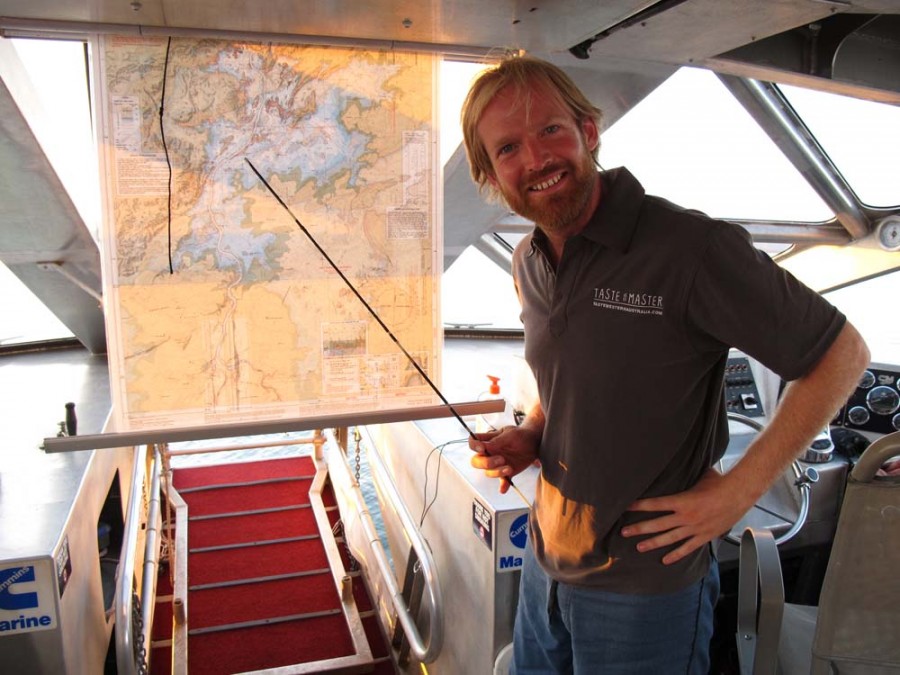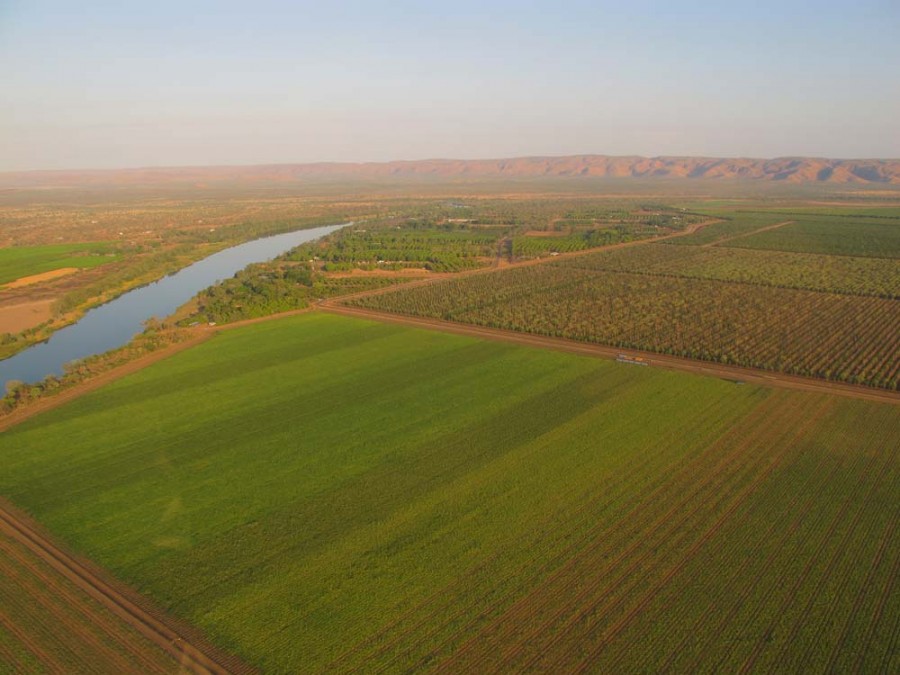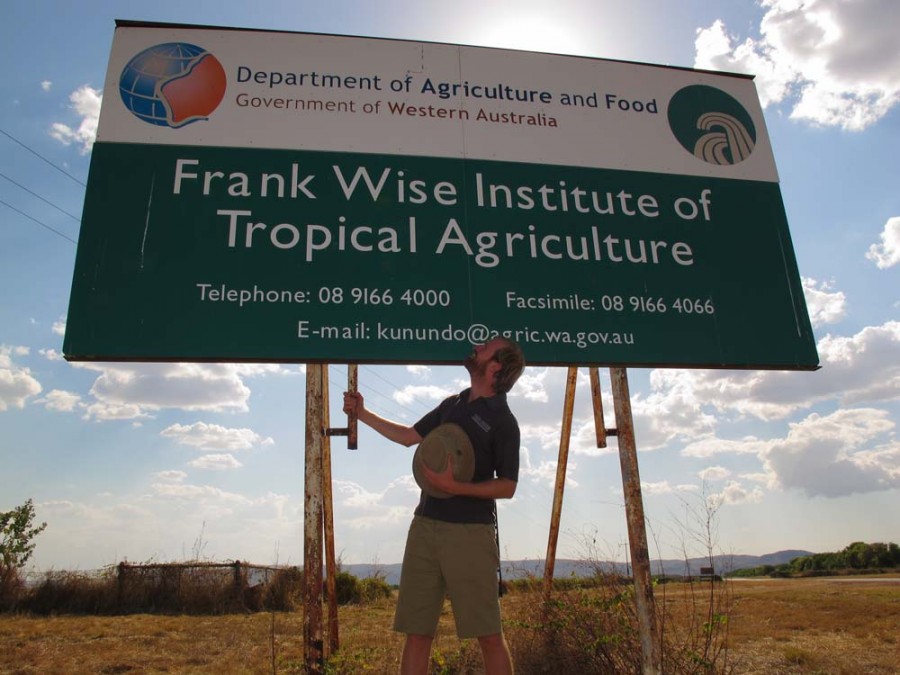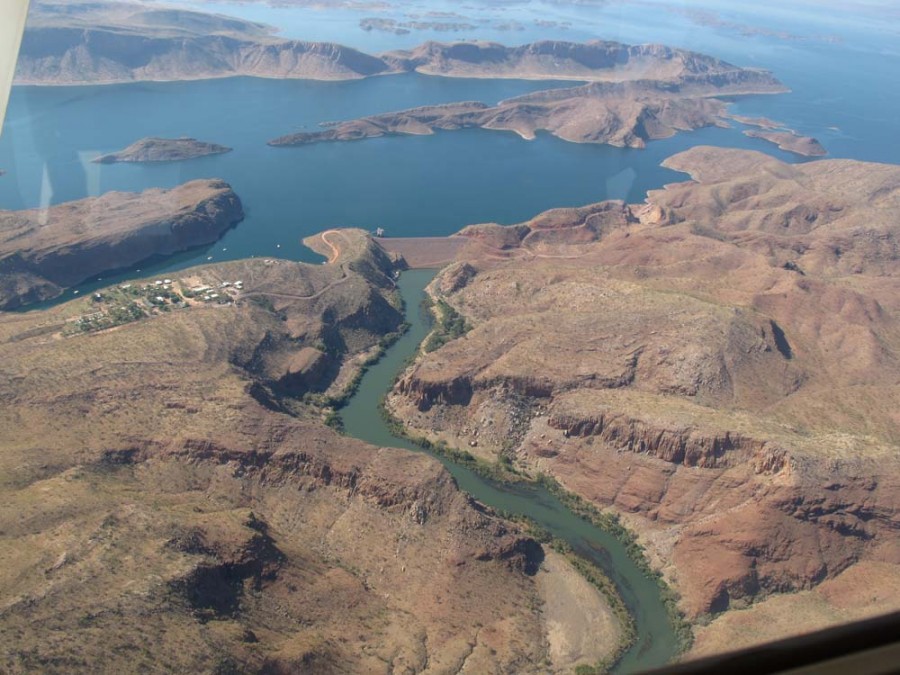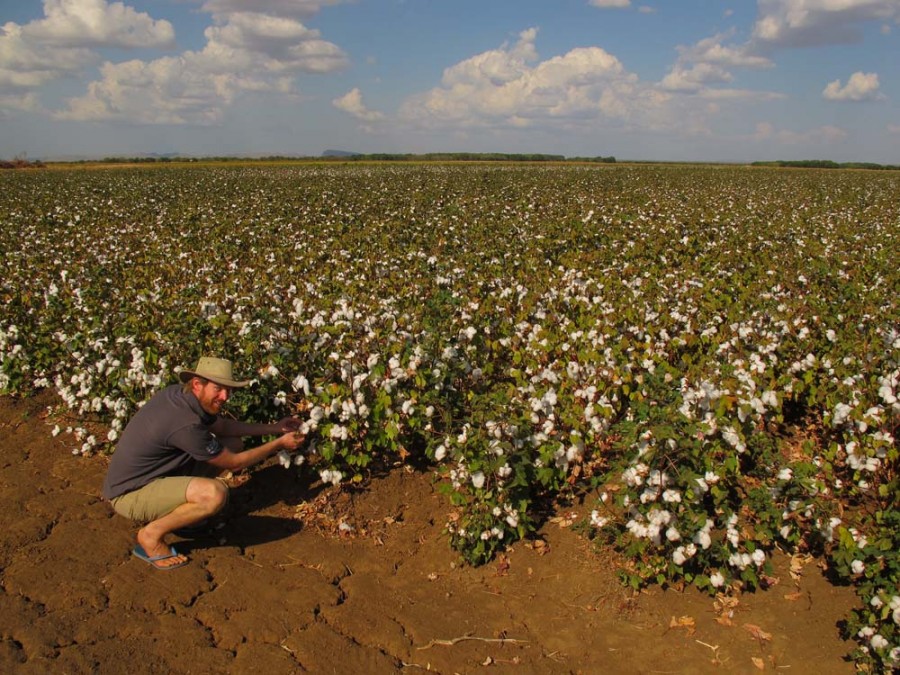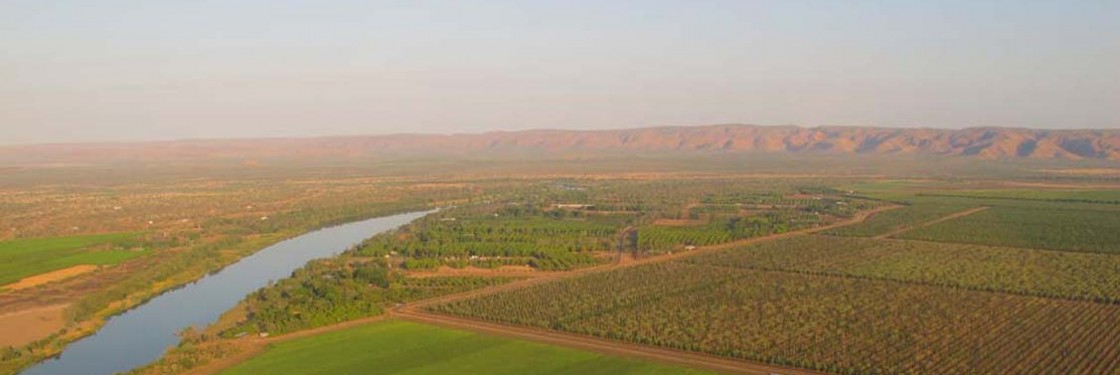
Perkins and the Ord River Irrigation System
Good morning class, today we’re going to be learning all about the Ord River Irrigation system.
Oh but Sir, I thought we had double P.E.?!? I’ve brought my trainers in and everything!
Don’t be so ridiculous Perkins! Does this look like a gymnasium to you? If you open your books to page 27 you’ll see that in 1928 a Royal Commission recommended the establishment of a research facility to investigate dry land and irrigated crop production, and the Kimberley research station was later established as a state/commonwealth joint venture.
…I’m sure we had P.E. Sir.
Research was carried out on sugar cane, cotton, rice, sorghum, maize, winter cereals, safflower, linseed, peanuts, lemongrass, kenaf and other fibre crops. In the 1940s an intensive soil survey was carried out, with Cununurra clay reported as the dominant soil type covering 29, 200ha.
…Look, it says so in my time-table.
The Ord River Irrigation Area (ORIA) comprises approximately 13,000ha of irrigable soils. The first stage of the project was completed in 1973 with the building of the Ord Dam that created Lake Argyle and ensured water supply for an irrigation project of more than 50,000 hectares.
…Sorry Sir, my mistake I’ve got my days mixed. It’s Thursday today isn’t it?
Yes that’s right Perkins. Now if you turn the page you’ll see that the value of irrigated farm activity has increased over the last nine years, with land use in the ORIA comprising sandlewood, citrus, mangoes, melon, pumpkin, hybrid seed, sugar cane and chia. Now Perkins, look at this…..Perkins? PERKINS??!
Over here Sir! With total irrigated farm activity in 2012’s dry season covering 14,294 hectares and a value of $116,153,542, I’m starting my OWN irrigation system!
Oh Perkins, will you ever win?!
- Prev
- Next

